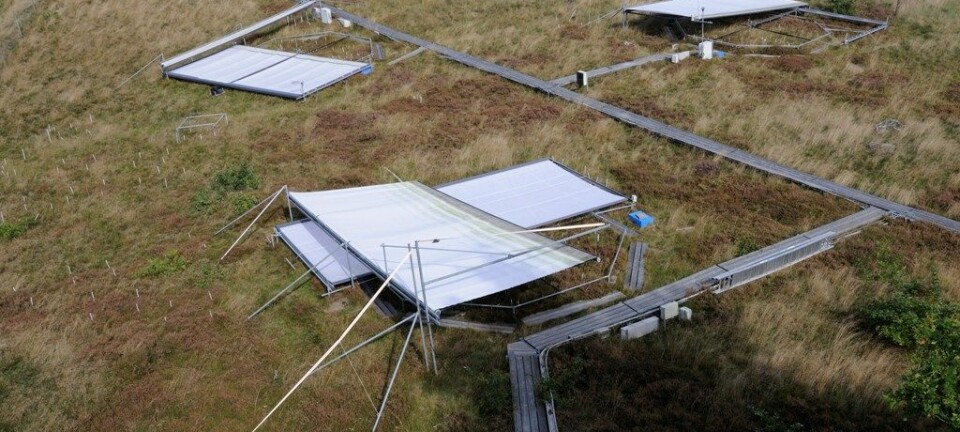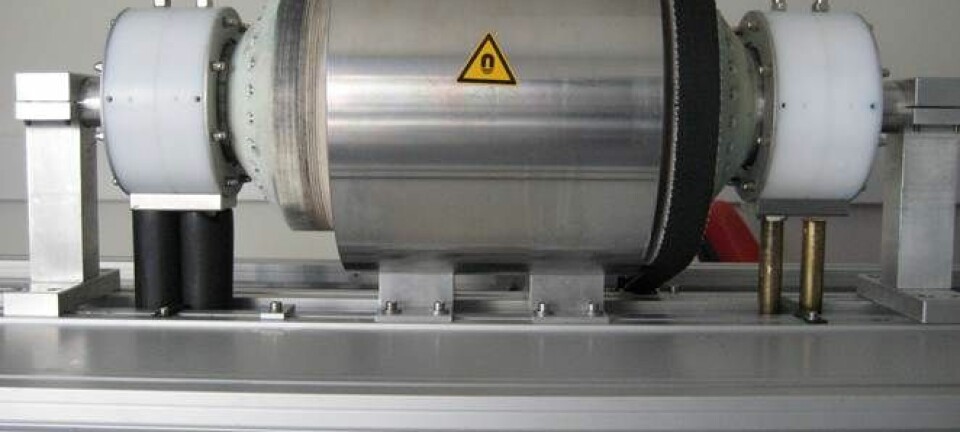
When electricity converts to heat – and the reverse
Thermoelectric materials can provide simpler and more reliable heat pumps. Heat from the Earth’s core and waste heat from power plants can be turned directly into electricity.
Denne artikkelen er over ti år gammel og kan inneholde utdatert informasjon.
Professor Johan Taftø at the Department of Physics at the University of Oslo has arranged a little demonstration in his office. Two solid aluminium table legs are placed in two glasses of water, one with ice water and one with hot water.
The table legs conduct heat to two small chips, positioned close together. These chips are made of semiconductor materials, which are also used in transistors and other electronic devices.
But the semiconductors here serve a different purpose. They create an electric current through heat. Wires run from the semiconductors to a small electromotor. Soon enough electricity is flowing to it to drive a propeller.
This is a tiny thermal power plant, completely without steam or turbines or other connections that waste energy and can wear out. Heat is being converted directly into electricity.
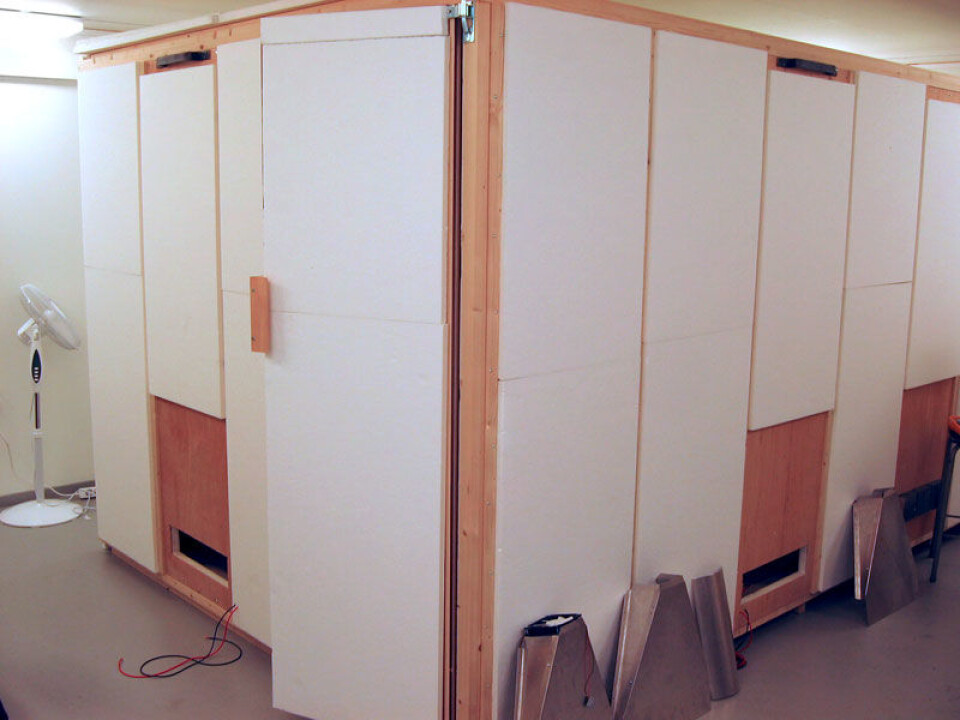
Heat in all sorts of spaces
The technology isn’t new. The spacecraft Voyager 1 and 2 are racing out of our solar system after more than a third of a century in space. The radio transmitters still work, thanks to power from thermoelectric elements, which in principle are like the ones in Taftø’s office.
The difference is that whereas Taftø uses cold and hot water, the Voyager space probes use the frigid temperature of interstellar space and the heat from a lump of radioactive plutonium oxide.
And Taftø is not primarily concerned about outer space. On the contrary: His thermoelectric elements are for heating “inner” space – living rooms, kitchens and other havens where you can protect yourself from the Norwegian winters.
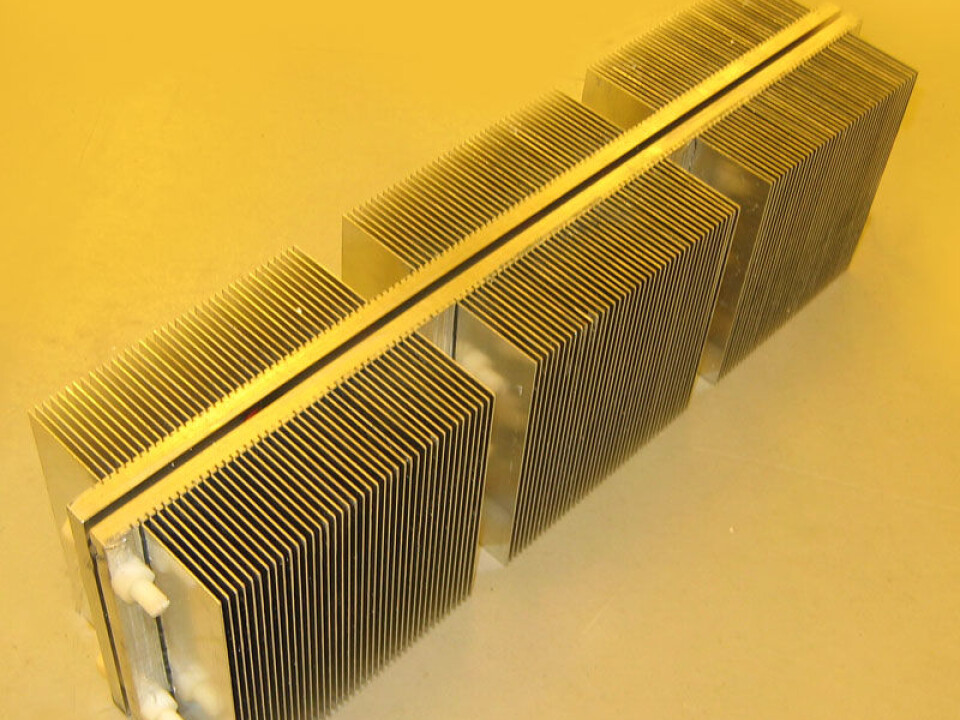
This is because the thermoelectric elements work both ways: heat to electricity and electricity to heat. Heat pumps are among the promising uses for the heat elements developed here. Taftø speaks warmly of them.
Simple and reliable
Taftø points out that thermoelectrical heat pumps have several advantages. They produce no environmentally harmful gasses, there’s no compressor or pipes that can leak, as with ordinary heat pumps. They are also simple and reliable.
“In addition, thermoelectric heat pumps can be downsized. You can have one in each room so that the heat is spread better throughout a house. You can even have heat pumps between the rooms to move heat from one to the other according to needs,” says Taftø.
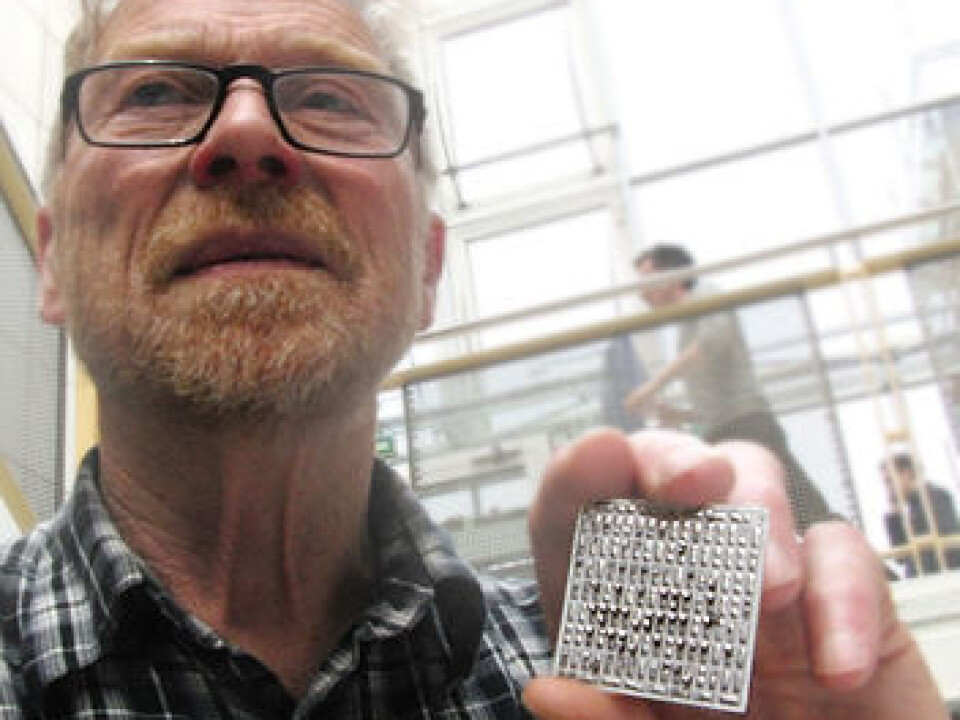
He speaks from experience. These researchers put their principles to test. At the University of Stavanger two structures have been built inside another to measure the efficiency of the thermoelectric heat pumps developed by Taftø and his research group.
Exploration of outer and inner space
“We’ve built a house with a floor space of 6m x 6m. Inside it we control a simulated outdoor climate,” says Professor Vidar Hansen at the University of Stavanger.
“Inside this building we have two smaller ones in which we installed heat pumps. These are built of standard elements. Thermoelectric heat pumps are not costly to produce or install,” he says.
Working together with Jan Kåre Bording, Hansen has shown that thermoelectric heat pumps can compete with today’s conventional heat pumps.
Still much to do
“Thermoelectric heat pumps still use a little more electricity,” admits Taftø, “but they are catching up with conventional ones. The difference isn’t so significant.”
“Remember that conventional heat pumps have been optimised for decades. We’ve just started on this process here in Stavanger. There’s still a lot to do,” says Taftø.
“And if new and more efficient thermoelectric materials are developed, the improvements will benefit these pumps,” adds Hansen.
Materials research is where the major developments in thermoelectric materials are happening.
Cooperation with the USA
Taftø was involved from the start of the project Basic and Applied ThermoElectrics (BATE) at the Department of Physics in 2006. BATE expanded enormously with the support of the Research Council of Norway.
“We are fairly big, but it will be a while before we reach the top,” says Taftø modestly. His group cooperates with others, among them Jeff Snyder at the California Institute of Technology.
This year Snyder co-authored an article in the magazine Nature. The article describes how semiconductor materials can be further developed to give more heat per watt.
“Materials developed in the 1960s are still in use,” explains Taftø, “but things are starting to happen.”
Figure of merit
Three demands are made of thermoelectric materials, and the challenge is that two of them are somewhat contradictory.
“They have to conduct electrical current well, and they have to be poor at conducting heat. Metals conduct electricity but they also conduct heat too well. That’s why we end up with semiconductors,” says Taftø.
The last demand is that the material must provide optimal voltage at a given temperature difference.
The combination of these three qualities defines what is called the figure of merit, ZT.
In the new materials that Snyder presented in Nature, he envisions a ZT approaching 2. The materials that Taftø and his group are testing in Stavanger have a ZT of about 1. Nevertheless, Taftø thinks these heat pumps can be optimised to be competitive on the market.
New uses
Moreover, the work being done by Taftø, Snyder and many others should lead to materials that make thermoelectric elements of a new order.
“Nobody has ever calculated an upper limit for ZT,” says Taftø.
The larger the ZT, the more applications. To start with, Taftø has his bets on bringing the technology of the Voyager probes down to Earth: making electricity out of heat.
“The surplus heat from thermal power plants can be utilised. Thermoelectric elements can be mounted together with solar cells to exploit the heat radiation in the infrared area. Or they can make electricity from the geothermal heat by drilling deep holes,” he says.
“This fall we are arranging an international conference for materials researchers at the Blåfarveverket at Modum,” says Taftø. The location is not incidental. This centuries-old blue pigment factory is where cobalt was mined, and now another mineral is proving itself useful.
Skuterudite
“Here we happened upon a promising thermoelectric material in the mineral skuterudite,” says Taftø.
“Researchers in Japan and Europe have contacted us and requested that we arrange the conference at Modum, which is where skuterudite was originally discovered.
Taftø’s choice of names isn’t incidental either. The project name BATE has a double significance. While being an acronym for Basic and Applied ThermoElectrics, “bate” is also taken from the old Norse language.
“Bate means advantage, progress, usefulness. The thermoelectric elements are going to be put to good use,” says Taftø.
And the propeller continues to spin on his desk.
--------------------------------------------
Read this article in Norwegian at forskning.no
Translated by: Glenn Ostling







